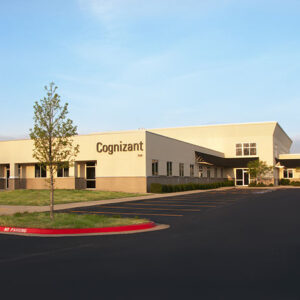
The modern CFO has access to a set of technologies that previous generations would barely recognise – with so much data available, the opportunities to add value, collaborate, make better decisions, innovate and drive growth are almost unlimited. It’s vital to keeping a business on an even keel – and understanding the numbers and sharing the insights are surefire ways of putting a firm on the path to success.
The value of data to any business is now perhaps greater than any single commodity. The ability to aggregate huge amounts of information and turn it into digestible and actionable insight is the biggest breakthrough in business since the birth of the computer.
And while accountants and those entrusted with steering an organisation’s finances have always relied on the collection and management of basic information, the volume and sophistication of data available has increased exponentially – to become a genuine driver of competitive advantage across all business sectors.
It allows the CFO to not only understand how underlying factors are driving business performance, but also, through the use of AI, machine learning, and cloud computing, to make more informed and predictive decisions based on rigorous, clear metrics.
The role of the data guardian
By taking on the role of data guardian, the CFO is now more empowered to effect change. And an essential part of that role involves centralising and standardising high-quality, well-governed data and understanding how it can support the agile and responsive business in its growth journey.
In doing so, finance can become a key enabler in making sure the business has the right data and insight to drive better decisions.
In partnership with CDOs, CFOs face challenges to achieve this: the volume of data is ever-growing, there are disparate sources and types of data, while the availability, quality, standardisation of data demands a keen focus on where the business should direct its efforts.
Instead of relying on other business functions to report on disparate sources of data, “we now have a situation where CFOs have a direct view of enterprise-wide-data and they can really get that data-to-insight-to-action loop working, explains Vivek Saxena, F&A service line leader at Genpact.
“Insights are used to make better decisions and for the business to take action. But not only that, finance teams are now able to see if the data moved because of those actions – whether the insights led to the right actions and what are the learnings,” he says.
“CFOs are much more informed about the end-to-end journey, which was not possible before. And the time it takes for finance to understand the consequences of its actions is now quicker and more efficient.”
Many businesses are now entering a phase whereby data capture is running by default across business units. That means they can increasingly draw on a greater breadth of data sources.
While work to improve internal streams of performance data has been ongoing for some time, many CFOs are looking outward to capture a broader range of metrics, from customer experience and sentiment to ESG-related measures that give a truer picture of the company’s impact in its communities and on the environment.

Taming the data tiger
These new data types offer an exciting glimpse into the future of insight-driven business strategy. Businesses can now capture and analyse both structured and unstructured data, as well as more experiential and qualitative customer insights. This data may come from both within and outside the business.
Through digitech and the clever use of automation and AI tools such as RPA and natural language processing, capturing data of all types is now easier. The next step is to make sure that what is captured is accessible, digestible, and delivers value, and does so with minimal cost and time delay. And that requires building the right kind of systems and processes to create a flexible data infrastructure to deliver real value.
“We’ve done a lot to try to simplify the data that we have available to analyse within the business. Like many businesses over the years, we have probably grown to have data dotted around the place and actually getting that in more consistent shape has been a big challenge,” says Standard Chartered CFO Andy Halford, who works alongside 85,000 employees across a banking giant with a presence in 59 territories, serving customers in close to 150 markets.
Halford’s story – where finance takes the lead on centralising data – is increasingly typical. Acting as de facto director of data, the CFO is now able to bring the traditional finance disciplines to bear. That means prioritising standardisation and efficiency of process in order to improve the quality of the data pool and harvest more compelling data sets.
Installing systems that deliver clarity, however, isn’t always so simple. “I think sometimes some businesses can end up with so much data – and so much analysis – that it actually becomes quite confusing as to what you take away from it,” Halford reflects.
And he believes the CFO is in the perfect position to articulate to the business how data can underpin better strategic decision making by looking and asking, “what is going to be the thing that’s going to change; are we riding the crest of that wave; are we off the pace with that; what more do we need to do to position ourselves in the right way to take advantage of this?”
Releasing the power of data
Halford is clear about the next steps: “Now we can take unsorted data and derive insight from it,” he says. “I think knowledge has been important over many decades in taking businesses forward, and we are fortunate that, with technology, the ability to actually crunch very, very large amounts of data very, very fast is huge.”
And beyond that lies a further frontier, as finance uses its facility with data to empower other business units to make better decisions backed up by insight.
“As CFOs we have to understand that the ambition, as well as the demand from the business, is increasing every day,” says Ilkka Hara, CFO of Kone, a manufacturer and service provider of elevators, escalators and flow solutions.
In his view, the basic ‘ticket to play’ in the data sphere means steering the finance function to a position where it can deliver compliance, risk management and the capability to record what happened in the past. But that’s just the beginning.
“Then it’s a question of what you can do in terms of really helping the organisation to look forward and understand not only what happened, but also what you should do about it,” he says.
“You need to be in a position where you help the whole organisation by giving them visibility as well as an understanding of the data that is coming from finance.” For a seasoned CFO like Hara, it’s no longer enough to understand where the deviations or exceptions came from.
“Now, it’s really about saying what are the decisions we should take today – and tomorrow – based on the data we have available,” he explains. “I need to be able to understand how we should lead the business going forward. And I think that’s clearly more of an ask to finance than it ever has been before.”
“How we analyse and apply data is not only improving efficiency in projects and processes, but also enables finance to be a better business partner.
“That means we need to enable the people who are doing the work every day, maintaining the elevators and escalators, to make the right decisions; and they make thousands of decisions every day,” Hara explains. “It’s really important that we are enabling the transparency and availability of the right data to the right people.”

Automated service
Genpact CFO Ed Fitzpatrick believes that automation is the secret sauce to not only gathering data and turning it into actionable insights, but also liberating finance to deliver real value. “We want to drive automation to get more into the analytics so that business leaders can make better decisions,” he says.
Fitzpatrick’s discussions with Genpact clients across the world reveal that driving cost savings is now table stakes. “The real differentiation is to free up finance teams’ time to focus on crafting and delivering insight to help the business in a range of areas, from targeting new customers to pricing a deal more effectively.”
It’s a transformative idea, and one that resonates with Ilkka Hara – who has been working on his company’s finance journey in two key ways. “Firstly, it’s been about driving efficiency in our operations: that’s about harmonisation and also centralising work wherever possible, in terms of actual countries as well as the various service centres we operate in within those countries.
“Secondly, we see good opportunities for automating processes and also, then, improving the master data framework that we have in place.” Hara suggests trying smaller iterations of new policies first to see how they turn out.
“Clearly, from our perspective, we’ve identified where we can see the best opportunities, and for us it’s been about starting with ‘business first’: where do we see value for customers being created and how can we do it better? Ultimately, we see that in our overall processes, there lies a lot of opportunities in the long-run for automation as well as significant further efficiency improvements.”
Ultimately, there is no doubt that internal and external changes have to be made before any company can fully and confidently rely on a data-led approach. These changes can be structural, interpersonal and managerial – all must align for a data-led approach to be successful.
Every CFO will recognise that the journey towards a data-driven enterprise will not always be a smooth one, but the opportunity to harness the potency of data to power better decisions across the business is one too enticing to ignore.
Read Genpact’s ‘CFOs Empowering Enterprise in the Age of Instinct’ report in full.
This article originally appeared in FDE summer 2021.






